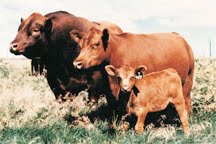I love to read; I truly believe that knowledge is power.
While on this quest for knowledge; last week I had a book dropped in my lap that I have not put down.
The title of this book is
BEEF Production Medicine and Management; in section A; you can read about Anatomy, Biosecurity, Body condition Scoring, Nutrition, Normal ranges for temperature, heart and resporatory rates, showing junior livestock, prescription and non-prescription drug guidelines and the list goes on this is just section A.
Section B - Routine Observation and Procedures.
Section C - Vaccines and Parasite Control Products.
Section D - Tests and Diagnostics.
Section E - Flowcharts for Specific Symptoms.
Section F - Infectious Diseases, Problems and Treatment.
If you are in 4-H, FFA, or a cattle producer this is a book you should own. I have to return this one soon, but I have order my own and it will be here soon.
this book is a Animal Health Publications you can order it on line or call 1-877-424-7838.
There is also manuals for;
Horses
Sheep and Goats
Beef and Dairy
Dogs and Cats
I think the next one that I will get will be the one for Horses. before I am done I hope to own all of them because my animal never seem to get sick on a week days.
Follow the links and check it out for yourself; KNOWLEDGE IS POWER.










